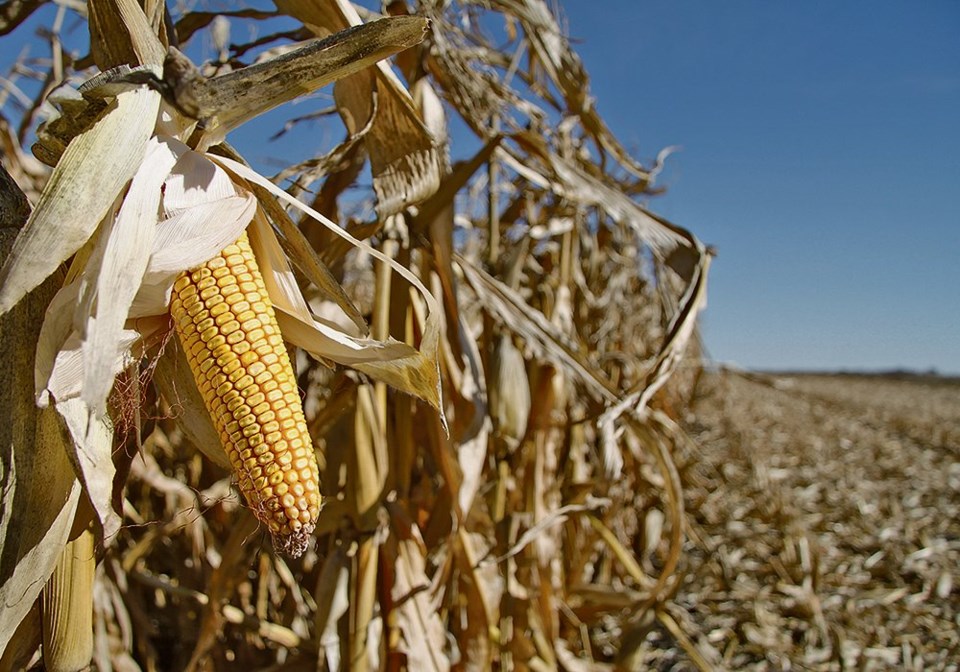WESTERN PRODUCER — A summer forecast calling for hot and dry weather in the United States Midwest will keep the corn and soybean bulls running if it comes to fruition, says an analyst.
“It’s hard to rule out some kind of crazy prices this summer,” said DTN lead analyst Todd Hultman.
A U.S. drought would add “another layer of bullishness” to the two crops that set the tone in world grain and oilseed markets, he said.
Corn and soybeans are already in short supply heading into the 2022-23 crop year due to factors like drought in С����Ƶ America, strong demand for biofuels and the war in Ukraine.
A weather disaster in the U.S. would tighten stocks even further.
“It’s hard to imagine what these prices are going to do,” said Hultman.
Prices have already reached record or near-record levels in 2021-22, with corn topping US$8 per bushel and soybeans exceeding $17.
“I wouldn’t be surprised, if a significant drought hit, to see (prices) go a dollar or two above that,” said Hultman.
Eric Snodgrass, senior science fellow with Nutrien Ag Solutions, said a lingering La Nina weather event is largely responsible for the June “flash drought” that occurred in the Texas through Ohio region of the U.S.
It has caused the Pacific branch of the jet stream to be weaker than normal, favouring more ridging in the midsection of the U.S.
“If you want to have a wet summer you don’t want that,” he said.
The jet stream has been pushed north and is basically following a pattern that runs through Spokane, Washington, Saskatoon and London, Ont.
All the low-pressure systems are following that same trajectory, which is providing plenty of rain in the Canadian Prairies but precious little for the U.S. corn belt.
The dryness has been accompanied by extreme heat, with several June days where temperatures approached 40 C.
There will be a reprieve from the hot and dry conditions at the end of June and beginning of July but there is a concern that the hot and dry conditions will return in July or August.
“That would hit pollination and grain fill and potentially peel back yields,” said Snodgrass.
He thinks the drought conditions will shift west to states like Illinois, Iowa, Nebraska, Kansas and Missouri. That is what history has shown when there is a lingering summer La Nina.
Corn pollination occurs around July 10 – 25 in that region of the country.
DTN ag meteorologist John Baranick concurs that it will likely be a hot and dry summer in the corn belt and the central and southern plains.
“We’re seeing a strong indication of that,” he said.
La Nina is only one factor that has contributed to the development of a dome of high pressure across the middle of the U.S.
“It’s going to be a feature for the rest of summer,” said Baranick.
When that dome sets up over the central plains everything in the middle of the country turns hot and dry while the coasts are cool and wet, which is what happened in the first half of June.
When the dome shifts to the west it brings relief to the corn belt in the form of wetter and cooler conditions, which is what is happening now.
He believes there will be plenty of times where the dome is lingering over the plains.
“I would expect a lot more of these heat wave events to come through like we saw earlier in June,” said Baranick.
The area he is most concerned about is south of a line from Kansas to Ohio.
The good news for American farmers is that the June heat helped offset the delayed seeding caused by wet spring conditions. Crop development is now about where it should be at this time of the year, he said.
Hultman warned that grain and oilseed prices are already in “emotional” territory characterized by extreme volatility.
So, while a summer drought in the U.S. could cause prices to move higher, another market development could result in a sudden and violent downturn.
He thinks soybean prices might be more explosive that corn due to extremely tight supplies of the oilseed.
The U.S. Department of Agriculture is forecasting 5.58 million tonnes of carryout from the 2021-22 crop, which isn’t a lot.
Hultman thinks soybeans may be in worse shape than corn heading into August, which is a critical moisture month for the oilseed.
Contact [email protected]




